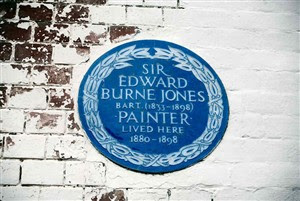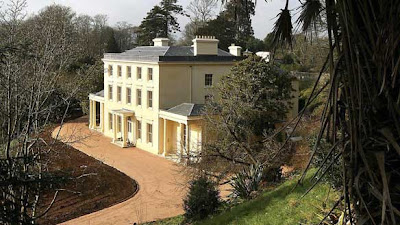An automaton, a man and
a woman who can never meet, two stories of love—all are brought to
incandescent life in this hauntingly moving novel from one of the finest
writers of our time.
London 2010: Catherine Gehrig, conservator at the Swinburne museum, learns of the sudden death of her colleague and lover of thirteen years. As the mistress of a married man, she must struggle to keep the depth of her anguish to herself. The one other person who knows Catherine’s secret—her boss—arranges for her to be given a special project away from prying eyes in the museum’s Annexe. Usually controlled and rational, but now mad with grief, Catherine reluctantly unpacks an extraordinary, eerie automaton that she has been charged with bringing back to life.
London 2010: Catherine Gehrig, conservator at the Swinburne museum, learns of the sudden death of her colleague and lover of thirteen years. As the mistress of a married man, she must struggle to keep the depth of her anguish to herself. The one other person who knows Catherine’s secret—her boss—arranges for her to be given a special project away from prying eyes in the museum’s Annexe. Usually controlled and rational, but now mad with grief, Catherine reluctantly unpacks an extraordinary, eerie automaton that she has been charged with bringing back to life.
As she begins to piece together
the clockwork puzzle, she also uncovers a series of notebooks written
by the mechanical creature’s original owner: a nineteenth-century
Englishman, Henry Brandling, who traveled to Germany to commission it as
a magical amusement for his consumptive son. But it is Catherine,
nearly two hundred years later, who will find comfort and wonder in
Henry’s story. And it is the automaton, in its beautiful, uncanny
imitation of life, that will link two strangers confronted with the
mysteries of creation, the miracle and catastrophe of human invention,
and the body’s astonishing chemistry of love and feeling.
'Machines cannot feel, it is
commonly believed. Souls have no chemistry, and time cannot end. Our
skin contains four million receptors. That is all I know. I love you. I
hold you. I miss you forever. I kiss your toes.'(Catherine Gehrig,
2010).
'Dear Percy, I did not really want a swan. In spite of what I said, I did not even wish to leave your side. I never wanted more, darling boy, than to make you well. Dear God, may he still be there and waiting for me. Dear Lord, I pray, let him be saved. May I deserve admittance, in your sight.' (Henry Brandling, 1845).
The premise is one of love lost through death, grief, illness, and abandonment in the worst possible way. The coil of unending suffering, some self-inflicted and some as a result of life itself, winding its way through these pages as hands on a clock move ever forward and backward.
Protagonist, Catherine Gehrig, is a character who finds herself grieving over the 'secret' lover she had for thirteen years, who was her co-worker as well. When one reads her chapters, her moods and emotions are palpable and heightened; one could say erratic. She's in shock and grieving. Her one saving grace is her career as a horologist (clock maker) at London's Swinburne Museum.
Peter Carey has beautifully composed a sonnet of love in all its forms: positive and negative. He does not shield the reader from his fictionalized reality, instead he opens the blinds for them, invites them in, if they choose to walk through his open door, then welcome. Be prepared for a story with two story lines spanning two decades between a man and a woman, whom although shall never meet, share one primary objective: Catherine puts the automaton duck or swan together as a way of saving her sanity and working through her grief while 'grieving' Henry puts it together as a final tribute to his dying son.
'Dear Percy, I did not really want a swan. In spite of what I said, I did not even wish to leave your side. I never wanted more, darling boy, than to make you well. Dear God, may he still be there and waiting for me. Dear Lord, I pray, let him be saved. May I deserve admittance, in your sight.' (Henry Brandling, 1845).
The premise is one of love lost through death, grief, illness, and abandonment in the worst possible way. The coil of unending suffering, some self-inflicted and some as a result of life itself, winding its way through these pages as hands on a clock move ever forward and backward.
Protagonist, Catherine Gehrig, is a character who finds herself grieving over the 'secret' lover she had for thirteen years, who was her co-worker as well. When one reads her chapters, her moods and emotions are palpable and heightened; one could say erratic. She's in shock and grieving. Her one saving grace is her career as a horologist (clock maker) at London's Swinburne Museum.
Peter Carey has beautifully composed a sonnet of love in all its forms: positive and negative. He does not shield the reader from his fictionalized reality, instead he opens the blinds for them, invites them in, if they choose to walk through his open door, then welcome. Be prepared for a story with two story lines spanning two decades between a man and a woman, whom although shall never meet, share one primary objective: Catherine puts the automaton duck or swan together as a way of saving her sanity and working through her grief while 'grieving' Henry puts it together as a final tribute to his dying son.
Peter Carey impressed me immensely by writing with an honesty that pierces the soul and using accurate historical references and figures within some of his chapters for Henry Brandling of 1845. For instance, I checked and his source, 'Artificial Life and Intelligence, circa 1730-1950 by Dr. Jessica Riskin, really exists, as well as, Abbe Desfontaines, a real 18th century person! It made me smile broadly every time I read the words, 'Illustrated London News' recognizing it as a wonderful nineteenth-century newspaper that I've actually read when researching Tennyson, Dickens, and other Victorian Era notables!
My only pet peeve was reading through the Germany sections pertaining to Henry Brandling. Just not very interesting to me. I would love to find out how a man can write from the female perspective rather convincingly?
If anyone is curious about The Chemistry of Tears, let me tell you that it was an intriguing and painfully emotionally raw dual-story of how two people loved, lost, grieved and tried to heal. I highly recommend The Chemistry of Tears by Peter Carey to anyone who has suffered through all that grief encompasses. This is a story of healing and I truly believe those readers who can identify with Catherine and Henry, on any level, are the ones who will understand just what writer Peter Carey has done! Bravo!!
Please feel free to leave any comments,



















